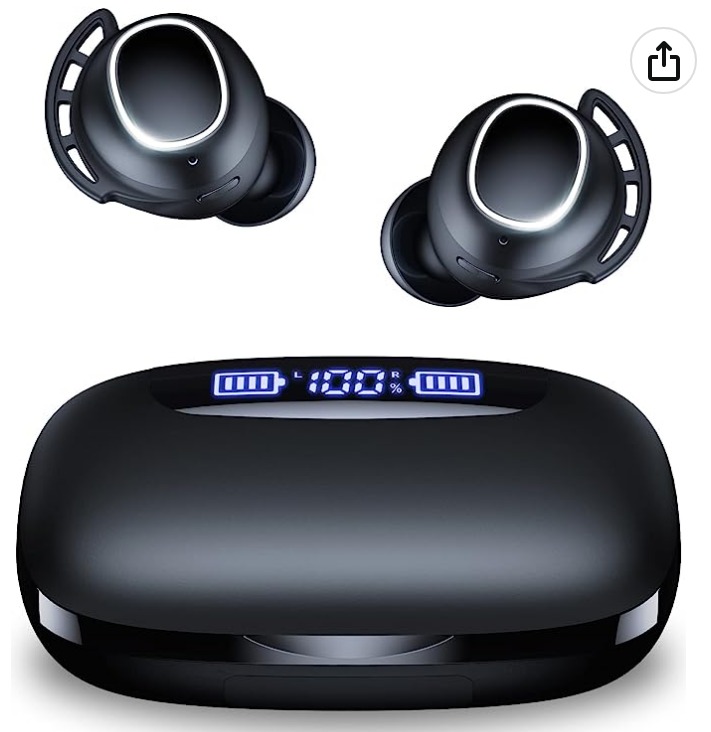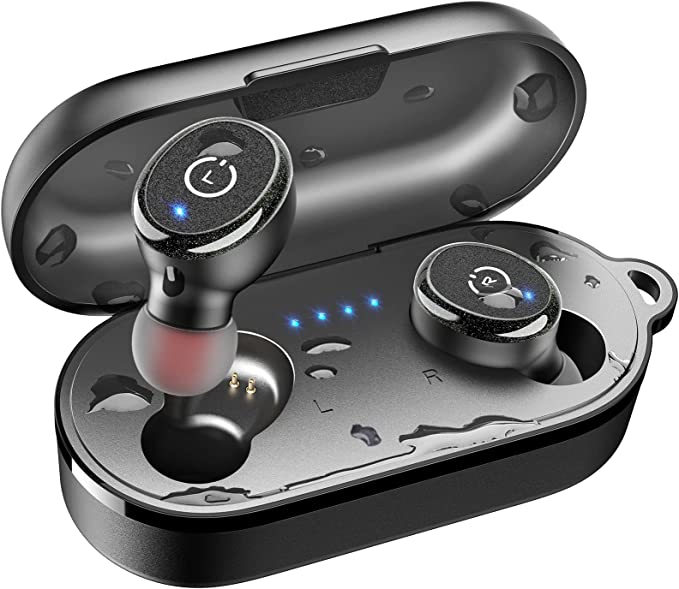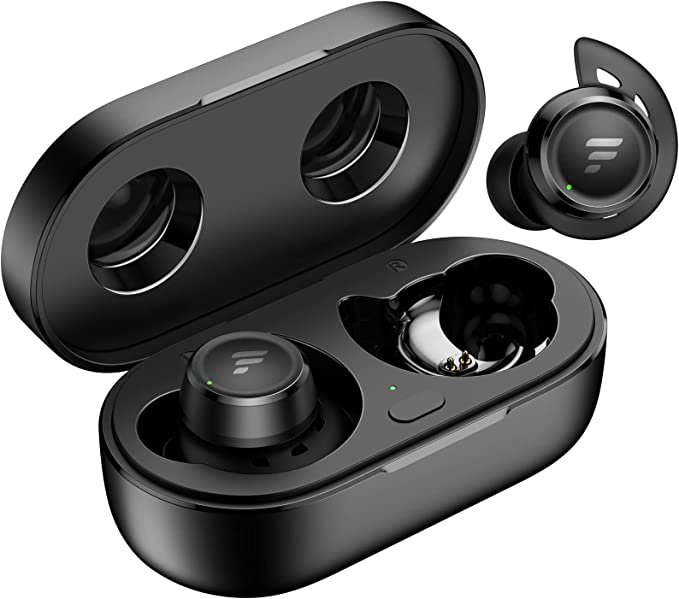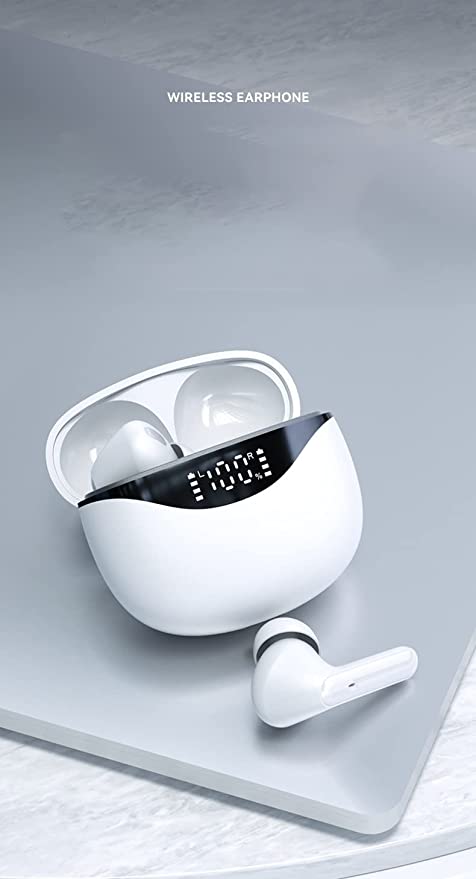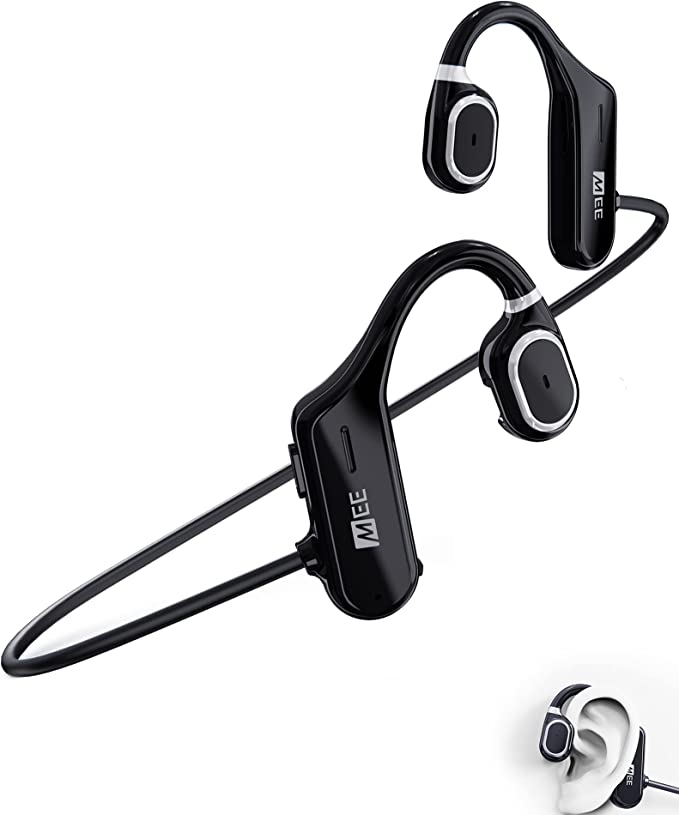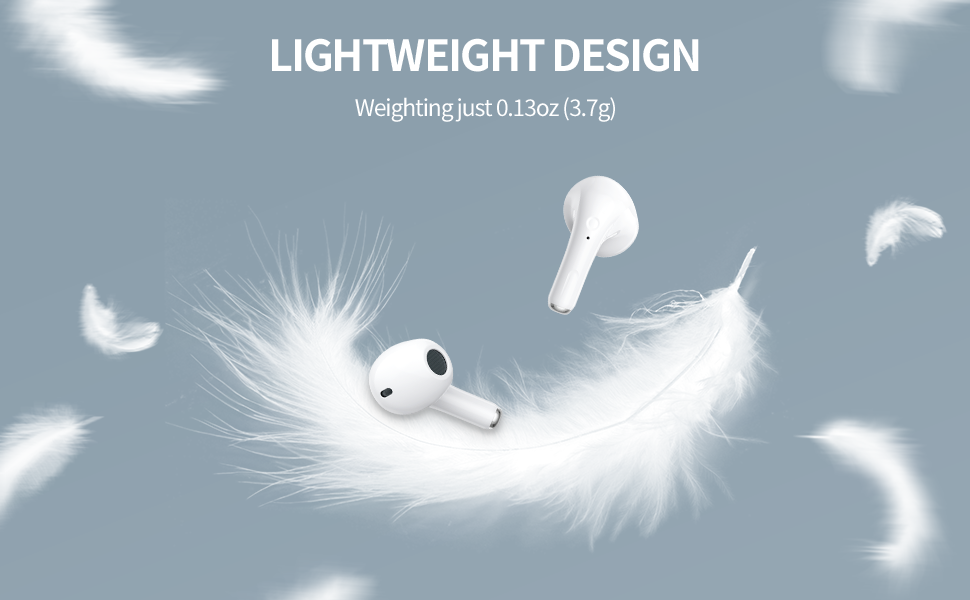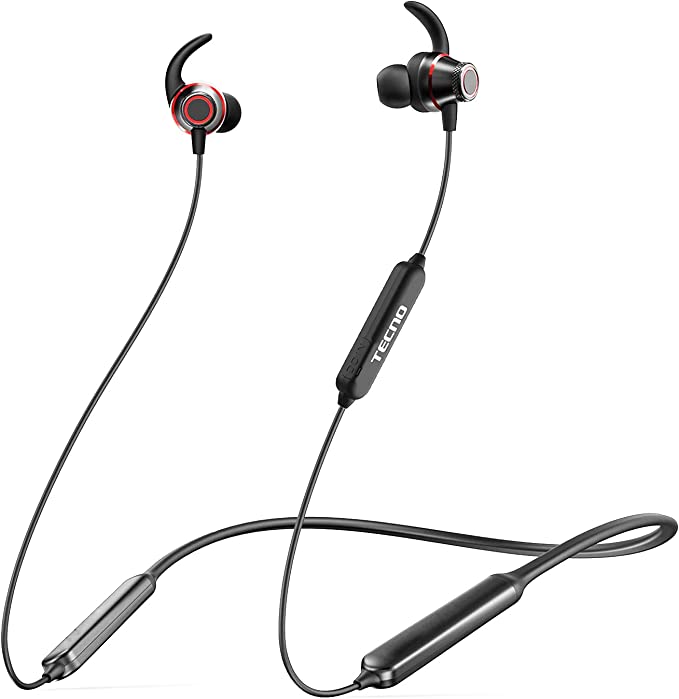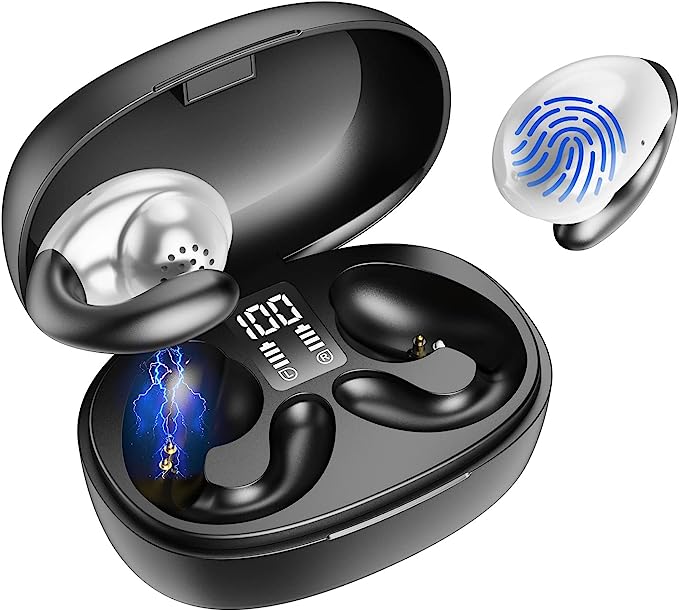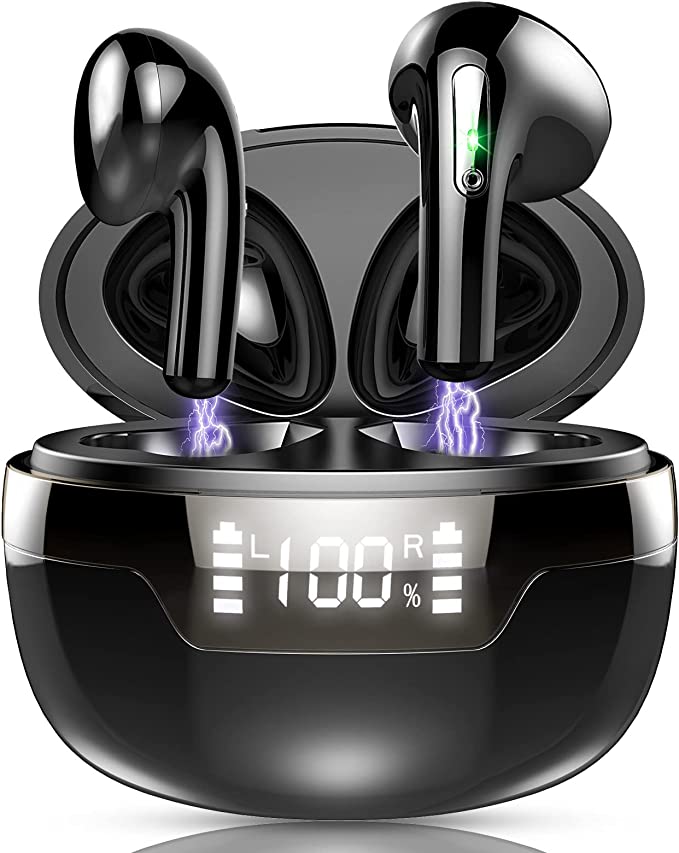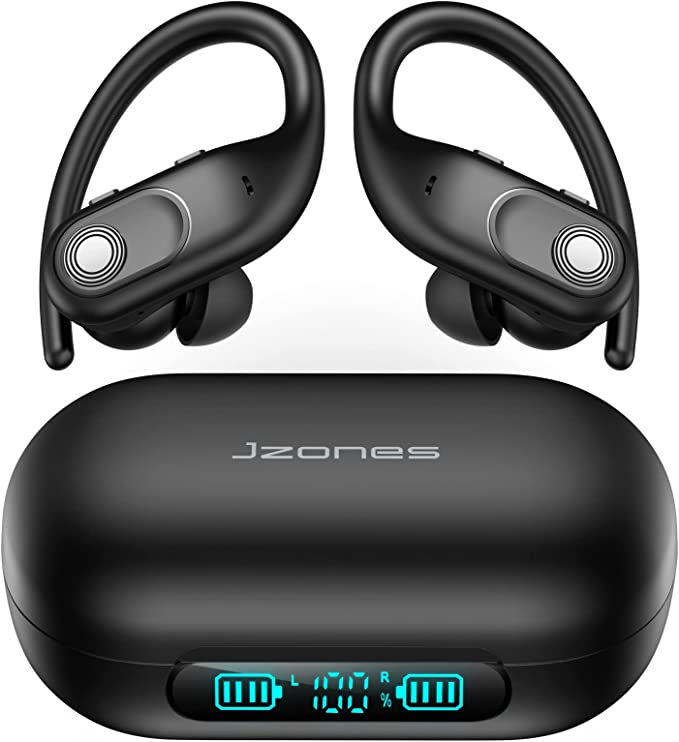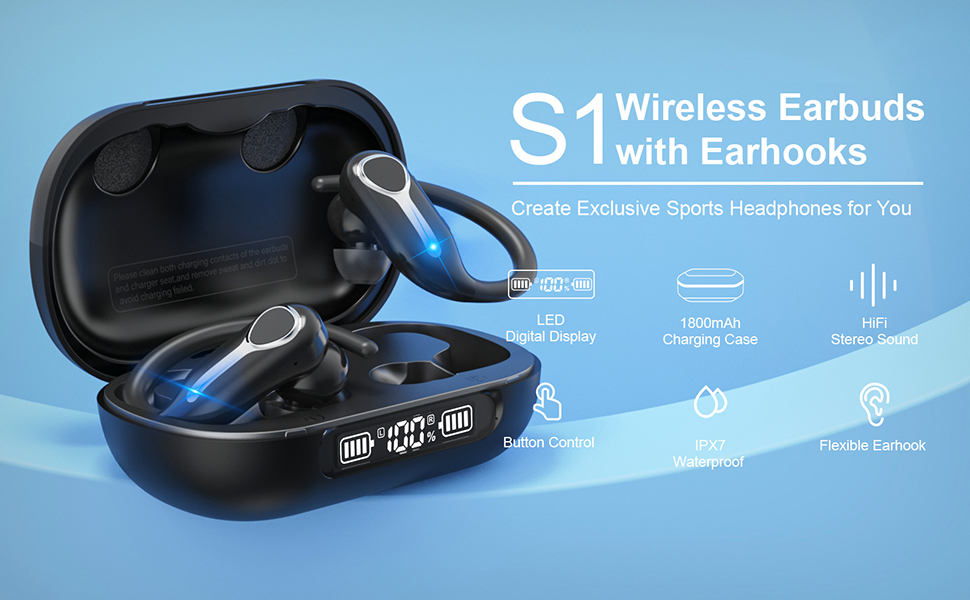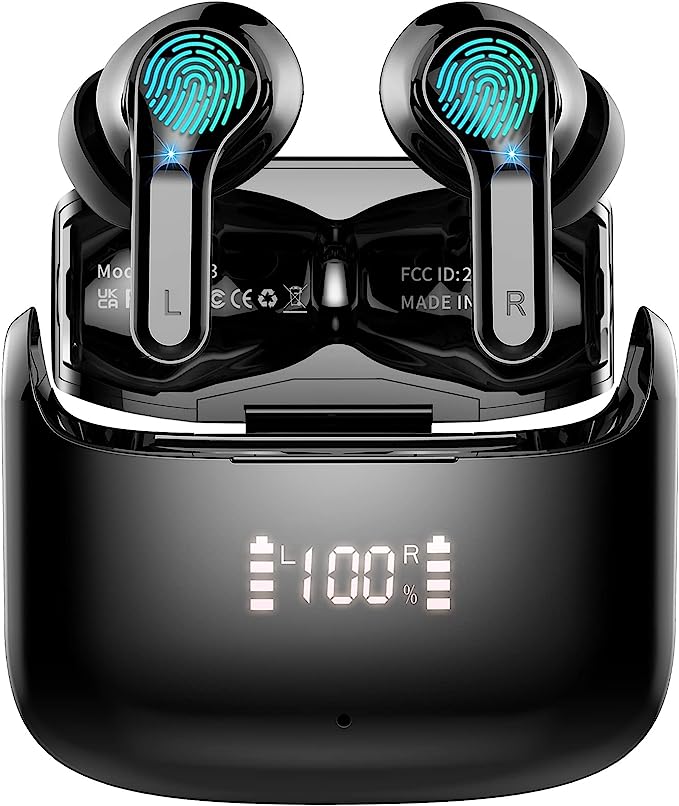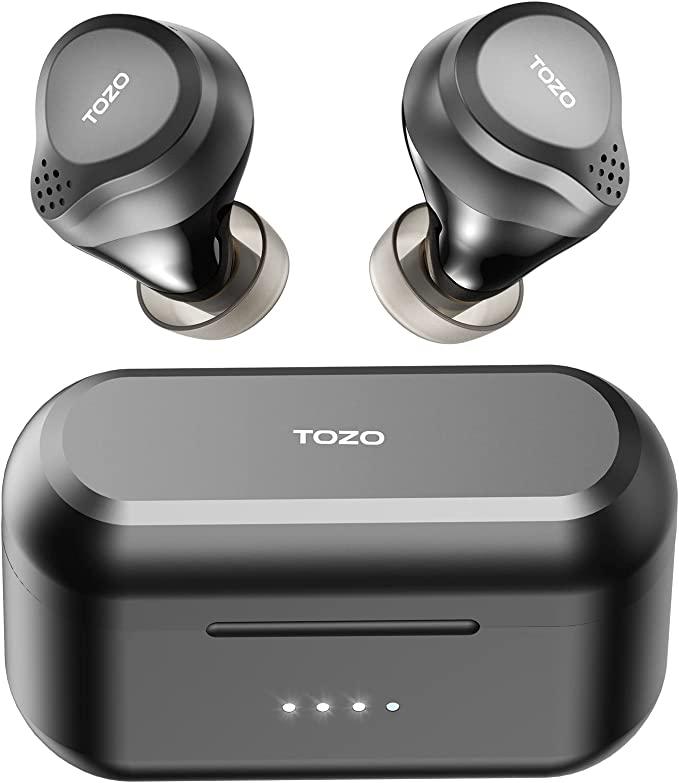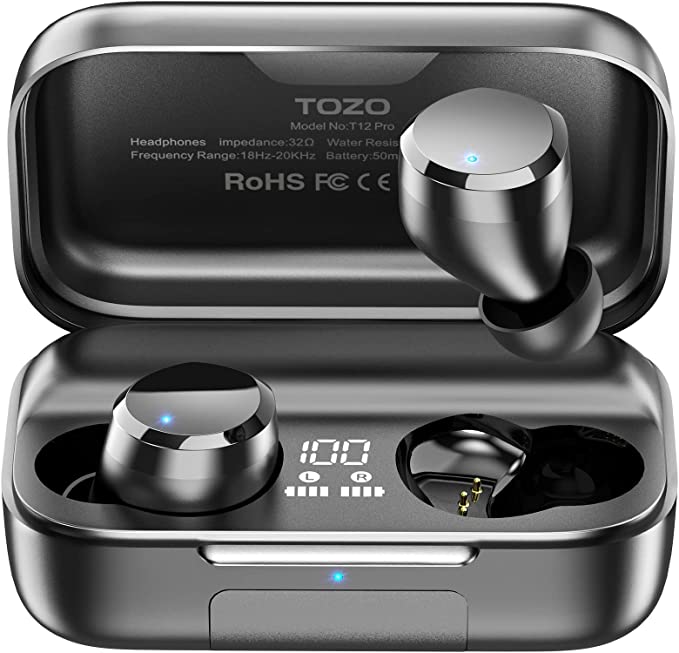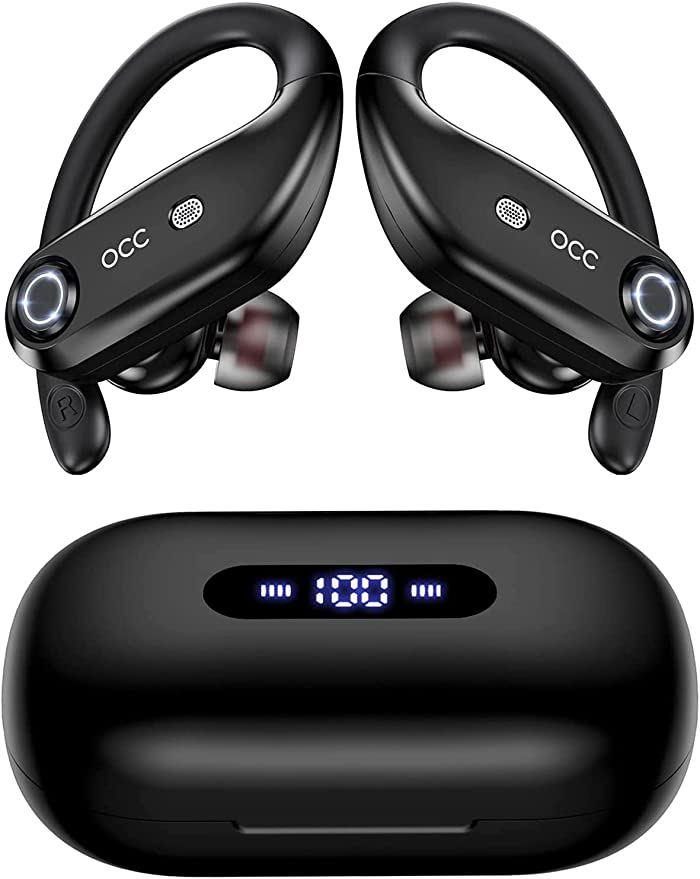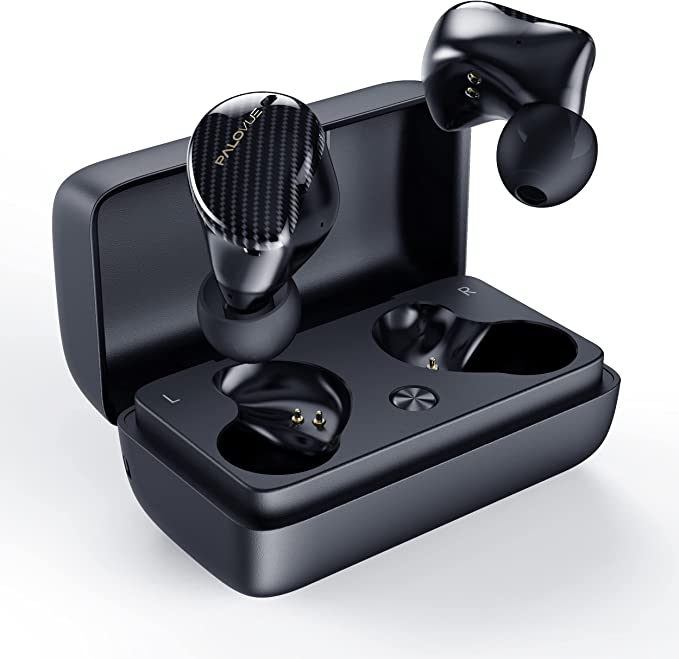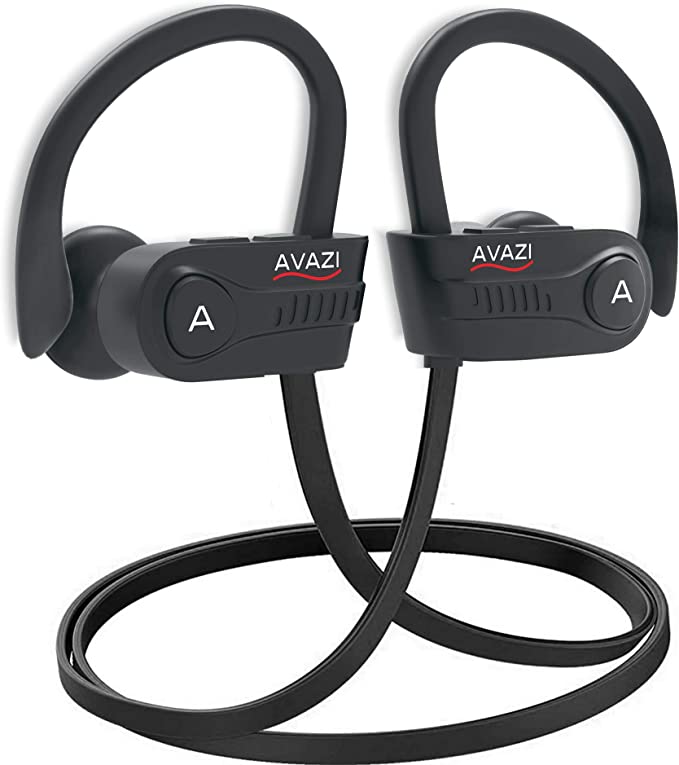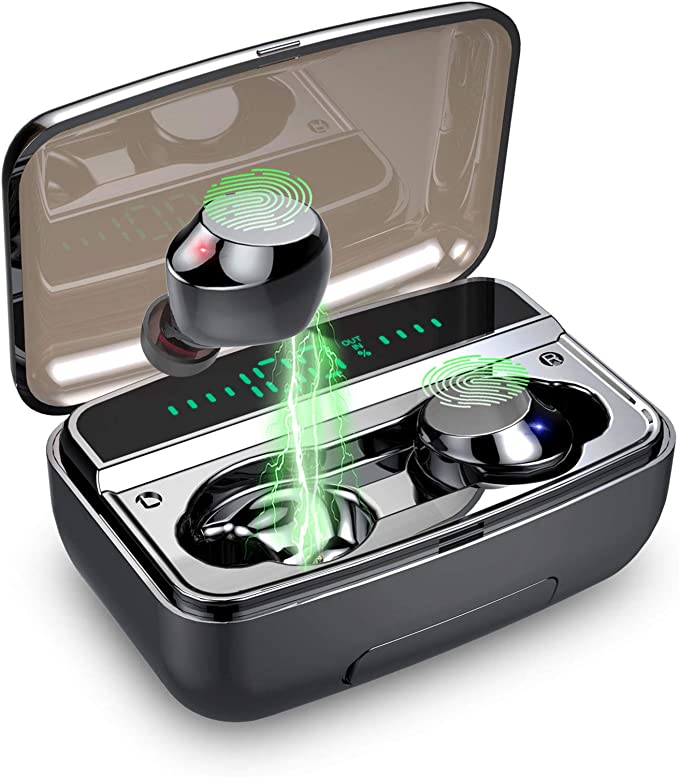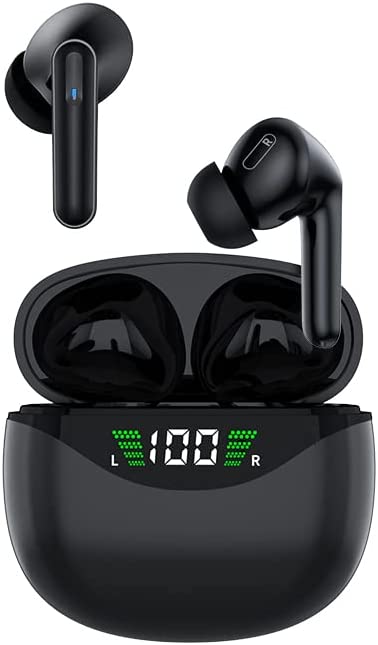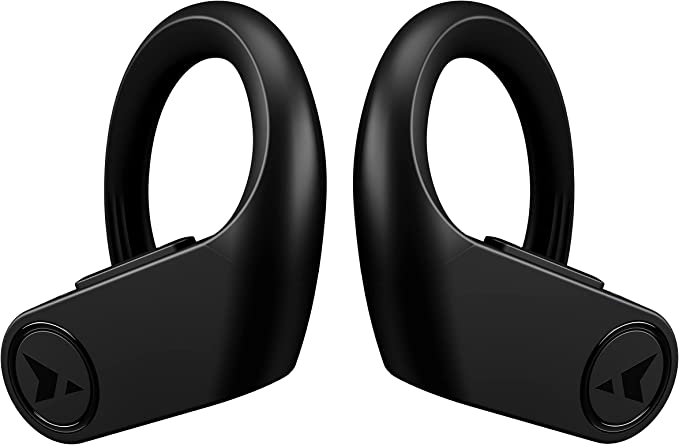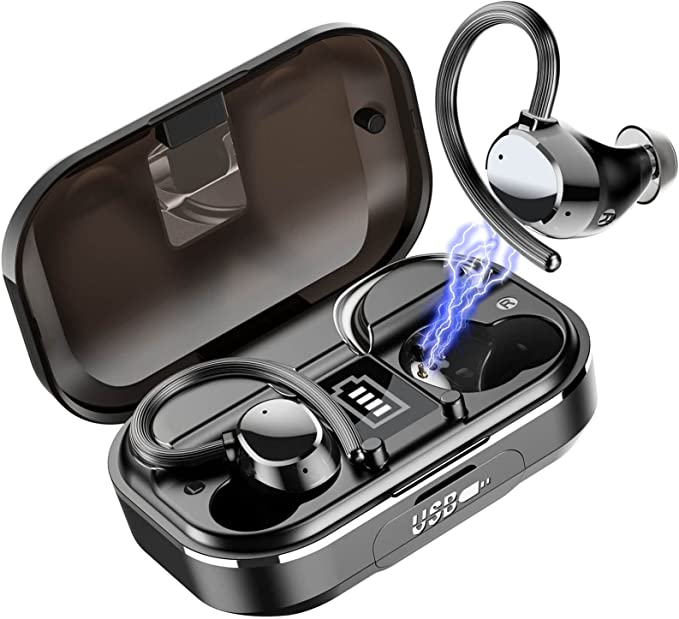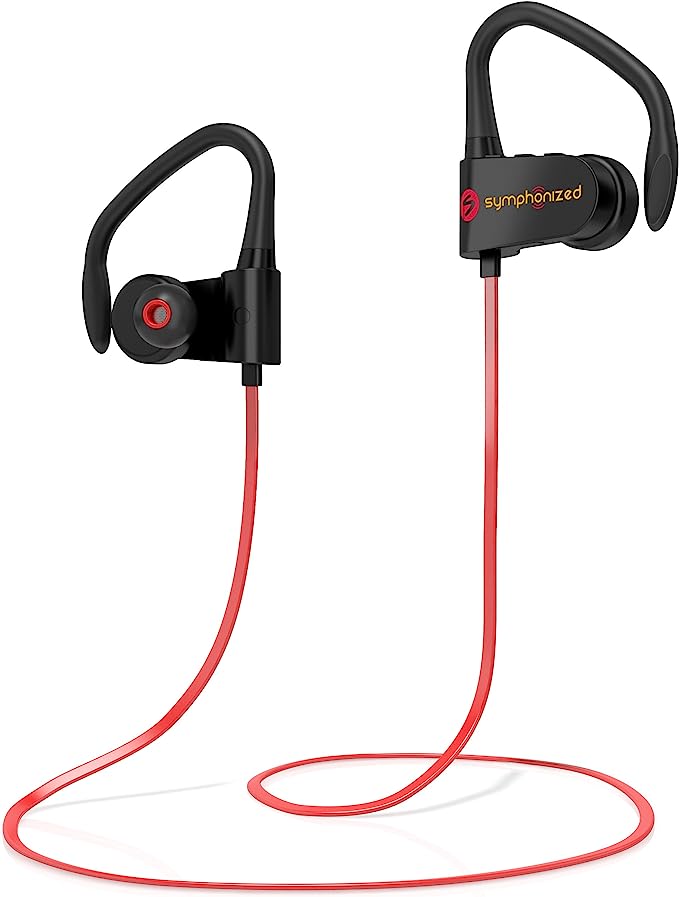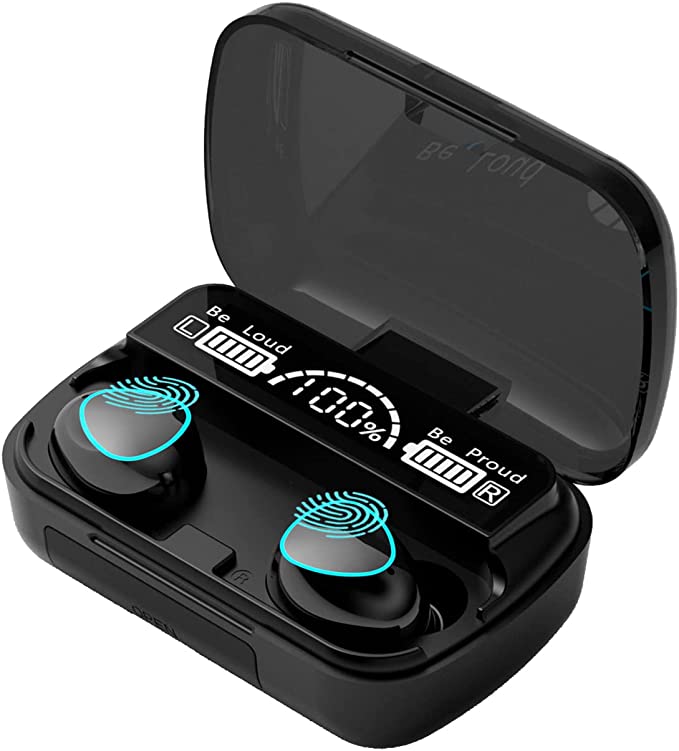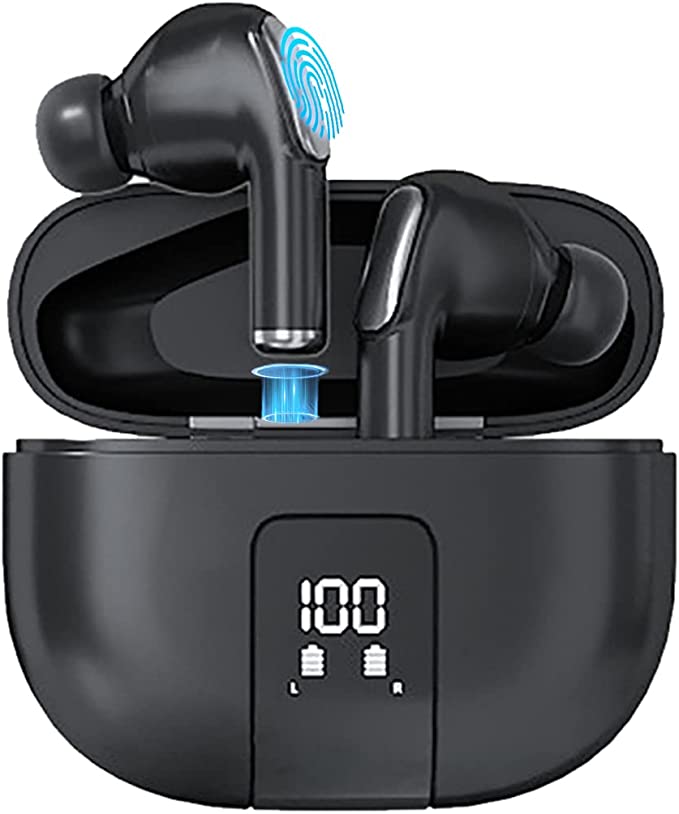Allway OE10 Open Ear Headphones: Experience Superior Sound & Protect Your Hearing
Update on Feb. 8, 2025, 12:36 p.m.
We live in a world saturated with sound. From the moment we wake up to the time we go to sleep, we’re constantly bombarded with audio – music, podcasts, audiobooks, phone calls, video conferences, and the ever-present background noise of modern life. Headphones have become an essential tool for navigating this sonic landscape, allowing us to create our own personal soundscapes amidst the chaos. But what if the very tools we rely on to enhance our auditory experience are actually putting our hearing at risk?

The Hidden Dangers of Traditional Headphones: Protecting Your Precious Hearing
Traditional in-ear headphones, while incredibly popular, come with a hidden cost. By sealing off the ear canal, they create a closed environment where sound pressure levels can build up, potentially damaging the delicate hair cells in the inner ear. These tiny cells are responsible for converting sound vibrations into electrical signals that our brain interprets as sound. Once damaged, they don’t regenerate, leading to permanent hearing loss. And it’s not just about loud music; even moderate volume levels over extended periods can contribute to hearing fatigue and, eventually, irreversible damage. Bone conduction, while avoiding direct ear canal contact, often struggle to deliver the full spectrum of sound, particularly lacking in the lower frequencies.
Think of it like this: imagine shining a bright flashlight directly into your eyes for hours on end. The intense light would eventually cause damage. Similarly, forcing sound directly into a closed ear canal can overwhelm the delicate structures of the inner ear.
What are open headphones?: A brief history and basic definition.
Open-ear headphones offer a revolutionary solution. Unlike their in-ear counterparts, they don’t seal off the ear canal. Instead, they rest gently on the outer ear, allowing sound waves to travel naturally through the air. This open design significantly reduces the pressure build-up, minimizing the risk of hearing damage.
The concept of “open” headphones is not entirely new. Early headphones, even in the late 19th and early 20th centuries, were often “open-back” or “open-air” designs. These were primarily used in professional settings like telephone switchboards and radio studios, where situational awareness was crucial. However, the focus was often on functionality rather than hearing protection per se. The modern resurgence of open-ear headphones is driven by a growing awareness of hearing health and the desire for a more natural and comfortable listening experience, combined with advancements in audio technology that allow for high-quality sound reproduction without sealing the ear.

The Allway OE10: Where Sound Meets Safety
The Allway OE10 embraces this open-ear philosophy, combining it with cutting-edge audio technology to deliver a listening experience that’s both immersive and safe. It’s not just about avoiding damage; it’s about enhancing your auditory experience in a way that’s sustainable for the long term. But how does it achieve this? Let’s delve into the science.
Unlocking the Power of Large Drivers: A Deeper Dive into Sound Quality
The heart of any headphone is its driver – the component that converts electrical signals into sound waves. The Allway OE10 boasts dual 16.2mm dynamic drivers. That might sound like technical jargon, but the principle is quite simple. The size of the driver matters. A larger driver has a larger diaphragm – the part that vibrates to create sound. A larger diaphragm can move more air, resulting in a richer, more powerful sound, especially in the bass frequencies.
Think of it like the difference between a small drum and a large drum. The larger drum produces a deeper, more resonant sound because it can displace more air. Similarly, the 16.2mm drivers in the Allway OE10 can deliver a fuller, more immersive soundscape compared to the smaller drivers (typically 6-10mm) found in most in-ear headphones. But wouldn’t a large driver mean a bulky headphone? Not necessarily. Advances in materials science and engineering allow for the creation of large, yet lightweight and efficient, drivers.

Bluetooth 5.3: The Science of Seamless Connectivity
Wireless headphones rely on Bluetooth technology to connect to your devices. The Allway OE10 utilizes the latest Bluetooth 5.3 standard. This isn’t just a marketing gimmick; it brings significant improvements in several key areas:
- Stability: Bluetooth 5.3 offers a more robust and reliable connection, minimizing dropouts and interruptions, even in environments with a lot of wireless interference.
- Latency: Lower latency means less delay between the audio source and your ears. This is crucial for video calls, gaming, and watching movies, where even a slight lag can be disruptive.
- Power Efficiency: Bluetooth 5.3 is designed to consume less power, extending the battery life of your headphones and your connected device.
These improvements are achieved through various technical enhancements, such as improved connection negotiation protocols and more efficient data transmission methods.
The Magic of ENC: How Noise Cancellation Works Without Sealing Your Ears
Environmental Noise Cancellation (ENC) is a technology that’s often associated with in-ear headphones, where a tight seal helps to physically block out external noise. But how can it work with an open-ear design? The answer lies in clever signal processing.
The Allway OE10 uses a dual-microphone array to capture both your voice and the surrounding ambient noise. Sophisticated algorithms then analyze these sound signals, identifying and separating the unwanted noise from your voice. The noise is then effectively “cancelled out,” leaving your voice clear and intelligible for the person on the other end of the call. It’s like having a tiny, invisible sound engineer working to clean up your audio in real-time.

Comfort Redefined: The Patented Rotation Axis Design
The best technology is useless if it’s uncomfortable to use. The Allway OE10 addresses this with its patented rotation axis design. This allows the earcups to rotate and adjust to the unique contours of your ear, ensuring a secure and comfortable fit, regardless of your ear shape or size. This is crucial for long listening sessions, workouts, or any activity where you need your headphones to stay put without causing discomfort.
Real People, Real Benefits: Hearing Health Stories with the Allway OE10
Let’s move beyond the technical specifications and hear from real people who have experienced the benefits of the Allway OE10:
- The Office Worker: “I used to get headaches from wearing in-ear headphones all day during video calls,” says Michael, a software developer. “The Allway OE10s are a game-changer. I can hear my colleagues clearly, but I’m also aware of what’s happening around me in the office. And the best part? No more headaches!”
- The Music Lover: “I’ve always been worried about damaging my hearing,” shares Emily, a music student. “I love listening to music, but I don’t want to sacrifice my hearing for it. The Allway OE10s allow me to enjoy my music at a safe volume without feeling isolated from the world.”
- The Podcast Enthusiast: “I listen to podcasts while I commute,” says David, a daily commuter. “With in-ear headphones, I was always worried about missing important announcements or being unaware of my surroundings. The Allway OE10s give me the best of both worlds – I can enjoy my podcasts and stay safe.”
- The Senior Citizen: “My old earphones were a bit unconfortable for me, so I looked for different. I really like the Allway OE10s because my ear is not completely covered.”
Protect Your Hearing: Expert Tips for Safe Headphone Use
As a hearing health professional, I can’t stress enough the importance of protecting your hearing. Here are some simple yet effective tips:
- The 60/60 Rule: Limit your listening volume to no more than 60% of the maximum volume for no more than 60 minutes at a time.
- Take Breaks: Give your ears regular breaks from headphone use.
- Choose Open-Ear: Opt for open-ear headphones whenever possible to reduce the pressure on your ear canals.
- Be Mindful of Your Environment: Avoid using headphones in situations where you need to be fully aware of your surroundings, such as crossing the street or operating machinery.
- Regular Hearing Check-ups: Get your hearing checked regularly by a qualified audiologist, especially if you notice any changes in your hearing or experience ringing in your ears (tinnitus).

Beyond Headphones: Where is technology going?
The Allway OE10 represents a significant step forward in headphone technology, prioritizing both sound quality and hearing health. But the innovation doesn’t stop there. The future of audio is likely to see even more advancements in open-ear designs, personalized audio profiles, and even integration with other health-tracking technologies. The goal is to create a seamless and safe auditory experience that enhances our lives without compromising our well-being. The journey towards a healthier and more immersive sonic future is just beginning.
